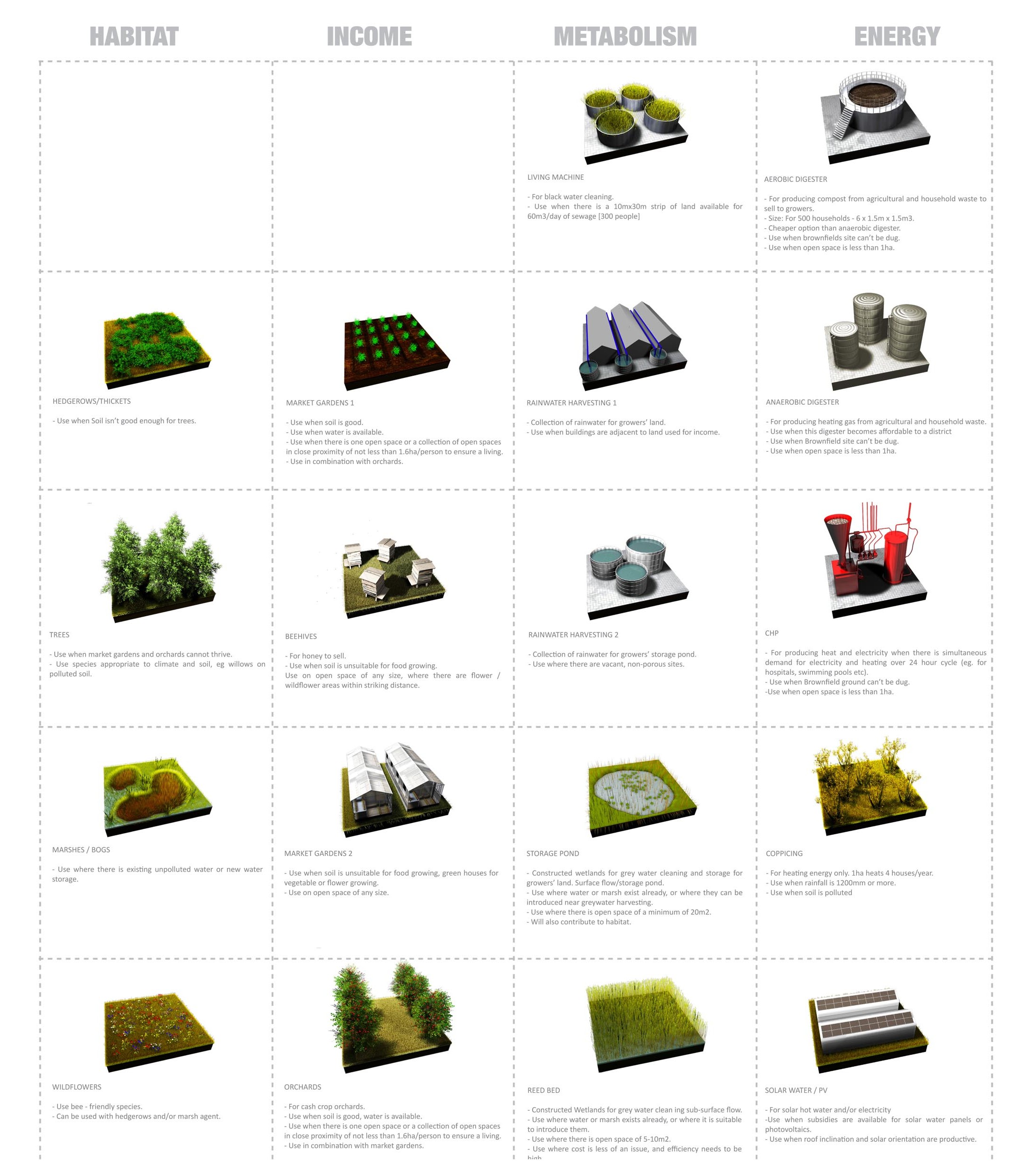As the 2011 Integrated Habitats Design Competition is getting launched, I’m looking at the winning entries from the 2010 competition in a series of posts.
The Seed Catalogue, by the team of Susannah Hagan, Silvio Caputo and Mark Gaterell, won the “Highly Commended” award. This brilliant idea creates a catalog of options for post industrial cities to manage degraded industrial spaces. Focused on northern England cities, this catalog proposes options in four categories to aid in planning and community enhancement and in turn serve as small investments. The catalog recognizes the complex layout of these cities and offers a way to use derelict land to transform the town into a network of artificial ecosystems which benefit residents in terms of growing food, creating energy, providing habitat and recycling waste. It does this by recognizing the difference in sites and providing options based on the specifics of each site in terms of size, surrounding context, soil condition and economic condition.
The catalog is divided into four categories; Habitat, Income, Metabolism and Energy. Habitat includes items such as hedgerows which are to be used with poor soil, trees for use when the soil is better, marshes to be used when there is unpolluted water, and wildflowers which can be paired with other items. The Income category includes options like market gardens and orchards for use when the soil is good and there is accessible water and beehives or greenhouses for when the soil is too poor to grow food. Metabolism features water management including rainwater harvesting which could be used adjacent to one of the Income modules for growing food, and storage ponds and reed beds which could be used to filter grey water. The final category, Energy, includes features designed to manage waste and provide energy such as aerobic and anaerobic digesters to be used on small brownfield sites and coppacing to be used on sites with polluted soil.
This style of planning, creating a catalog, is a very appealing way to rejuvenate towns and cities struggling with derelict and abandoned industrial sites. It offers cities an easy-to-use catalog, and helps create an overall network. It’s also nice that the catalog offers a variety of categories, it doesn’t focus solely on habitat or food production, but manages to offer a balance of beneficial spaces for wildlife and the community alike. I could see many cities adapting this idea for their own regions and building a catalog of options like these. It certainly lends itself as an excellent template.
Read more about The Seed Catalogue and download the full PDF submission.
More from the Integrated Habitats series:








This seed catalogue concept reminded me of vacant lot greening strategies proposed in the Vacant to Vibrant handbook at http://gtechstrategies.org/assets/CommHandbook_VacantToVibrant.pdf.
Thanks for sharing that book Georgia, I wasn’t familiar with it. It’s a great idea, I like how they outlined the different possibilities for lots and that community expression was one of them. It would be nice to see a program where this sort of idea could be implemented in partnership with the property owner for use on a temporary basis. In my neighborhood, there were several lots that sat empty for multiple years while waiting out the economic problems, permitting issues, financing, etc. It would be great to see those lots being used in the interim for the community. I just saw a story from San Francisco about Parkmobiles, temporary parks that can be moved around the city and that type of mobile idea would be great for vacant lots and could move from lot to lot until it’s developed or had a more permanent solution. Funny how certain random things come together in a short time to start the brain thinking.
This is fascinating Kelly. I love the recipe approach, and am imagining the combinations of each type.